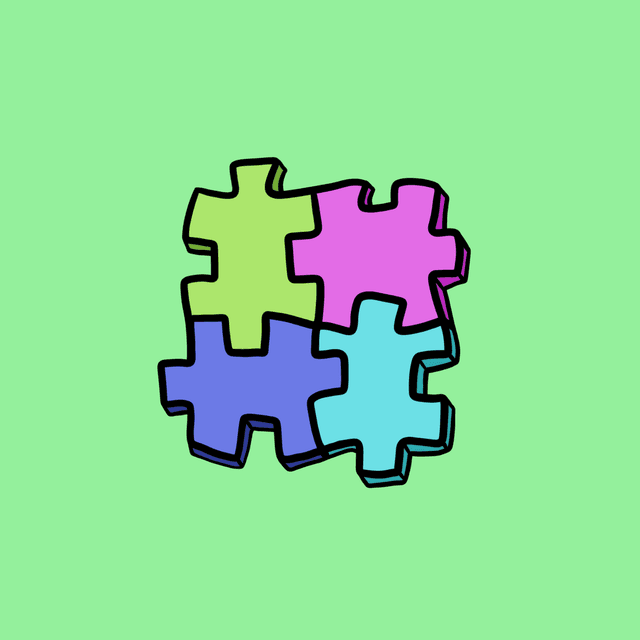Sections
Latest
Let's learn how to build sentences with confidence, in German.





Sentence structure is pretty flexible in German, because of the German case system. Take a look at these three sentences:
All three of these sentences make sense and mean the same thing (The man gives the dog the bone). This is because each noun in the sentence plays a specific role, indicated by their article.
| Case | Noun | Role |
|---|---|---|
| Nominative | der Mann | Subject |
| Accusative | den Knochen | Direct Object |
| Dative | dem Hund | Indirect Object |
These roles are important to keep in mind, for this lesson:
| Building Block | Description |
|---|---|
| Subject | The thing performing the action of the sentence |
| Verb | The action performed in the sentence |
| Direct Object | The receiver of the action of the sentence |
| Indirect Object | The receiver of the direct object |
Even though the positions of the nouns change in each sentence, the roles always stay the same, and so the meaning conveyed stays the same too. Only the emphasis is different; the noun at the beginning of the sentence is emphasised.
However, the sentence below, which uses all the same nouns, in the same roles, doesn't make sense:
But why?
Well, although German sentence structure is flexible, there are still rules and patterns to follow in order to make sure the sentence is properly structured. In this case, the correct sentence structure requires for the verb to be placed directly after the first noun.
So, how can we confidently put sentences together, knowing that all the elements are in an order that makes sense?
Let's continue, to find out.
A sentence is made up of several elements, each of which can be swapped around and slotted into different positions in a sentence. When is comes to German sentence structure, there are five important such positions to learn.
Here are two sentences that use all five of them:
For now, let's just focus on position 1 and 2, that make up the starting blocks of a sentence.
We'll talk about these positions in the next section.
Here are three common sentence structures that you'll use all the time. The first is the simplest:
This is the go-to sentence structure; the most commonly used.
When using this structure, the subject must be next to the conjugated verb, and the verb must be in position 2.
Use the word picker to build a sentence using the default sentence structure:
This sentence structure is used whenever any of the nouns in the sentence other than the subject noun is to be emphasised. To create emphasis, this noun can be placed at the beginning of the sentence, in position 1.
So, for example:
Reorder these sentences using the Reorder for Emphasis Sentence Structure:
| Statement | Question |
|---|---|
| Der Künstler malt ein Bild für meine Mutter. | Für meine Mutter malt der Künstler ein Bild. |
| Der Zahnarzt hat zwei Zähne gezogen. | |
| Der Großvater schenkt dem Enkel eine Uhr. |
When a yes-no question is asked, we can just take the default sentence structure and swap the positions of the subject noun and verb around, so that the verb is at position 1 and the subject is at position 2.
Let's have a look at two examples:
Reorder these sentences using the Yes-No Question Sentence Structure:
| Statement | Question |
|---|---|
| Der Löwe will das Zebra zum Abendessen essen. | Will der Löwe das Zebra zum Abendessen essen? |
| Der Fisch schwimmt durch den See. | |
| Du schenkst ihr Blumen. |
Well done! 🎉
We have covered the three basic sentence structures. Now let's learn how to built longer, more complex sentences.
You may have noticed that all three of the simple sentence structures are used to build main clauses (aka independent clauses).
Now we can level-up, by connecting two independent clauses together, using coordinating conjunctions.
Here are some examples of independent clauses combined together, with the use of coordinating conjunctions:
Example one:
Example two:
In these sentences, the coordinating conjunction is placed just before the second independent clause, in position 0.
Hopefully, you'll find that these sentences are fairly straightforward to build.
Now, let's take a look at something more complicated: subordinate clauses.
A subordinate clause is a clause that does not make sense on it's own. It must be connected to an independent clause, and is done so with a subordinating conjunction.
Coordinating conjunctions → connect two independent clauses.
Subordinating conjunctions → connect an independent and subordinating clause.
All interrogative words and relative pronouns can also be used as subordinating conjunctions.
When using subordinating clauses, the conjugated verb must be placed at the END position.
Here, the independent clause is combined with the subordinating clause, using the subordinating
conjunction: weil. The conjugated verb hat, is placed at the END position.
In these sentences, the subordinating conjunction is therefore placed just before the second independent clause, in position 3.
We may also swap the clauses around. When we do this, however, we must place the conjugated verb of the independent clause in position 3.
Here, the independent clause is combined with the subordinating clause, using the subordinating conjunction: weil. The conjugated verb hat, is therefore placed in the END position of the clause.
Well done! 🎉
We have covered some important German sentence structures.
Continue on to the next lesson on, where we'll learn how to Compare Things, in German.